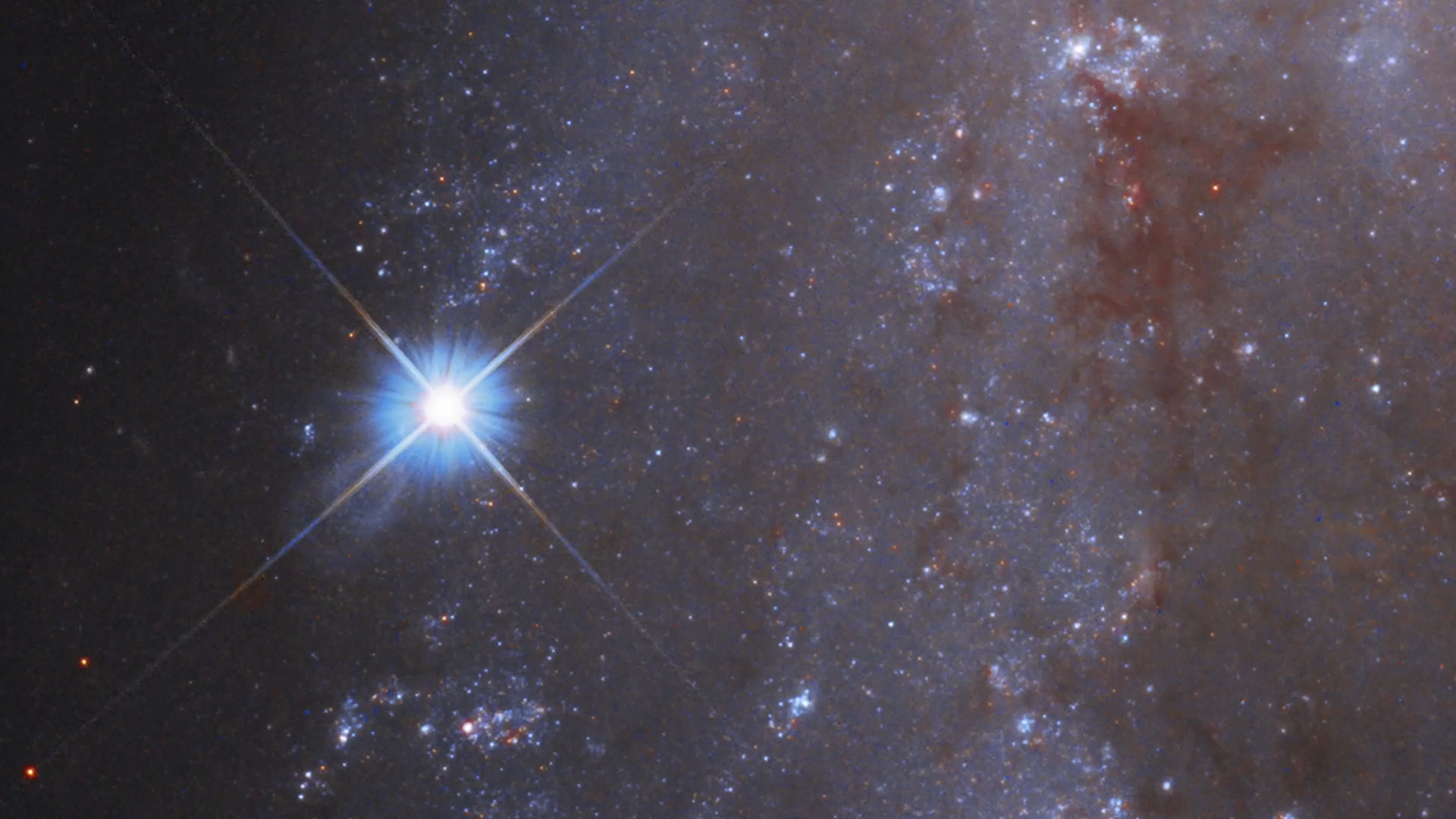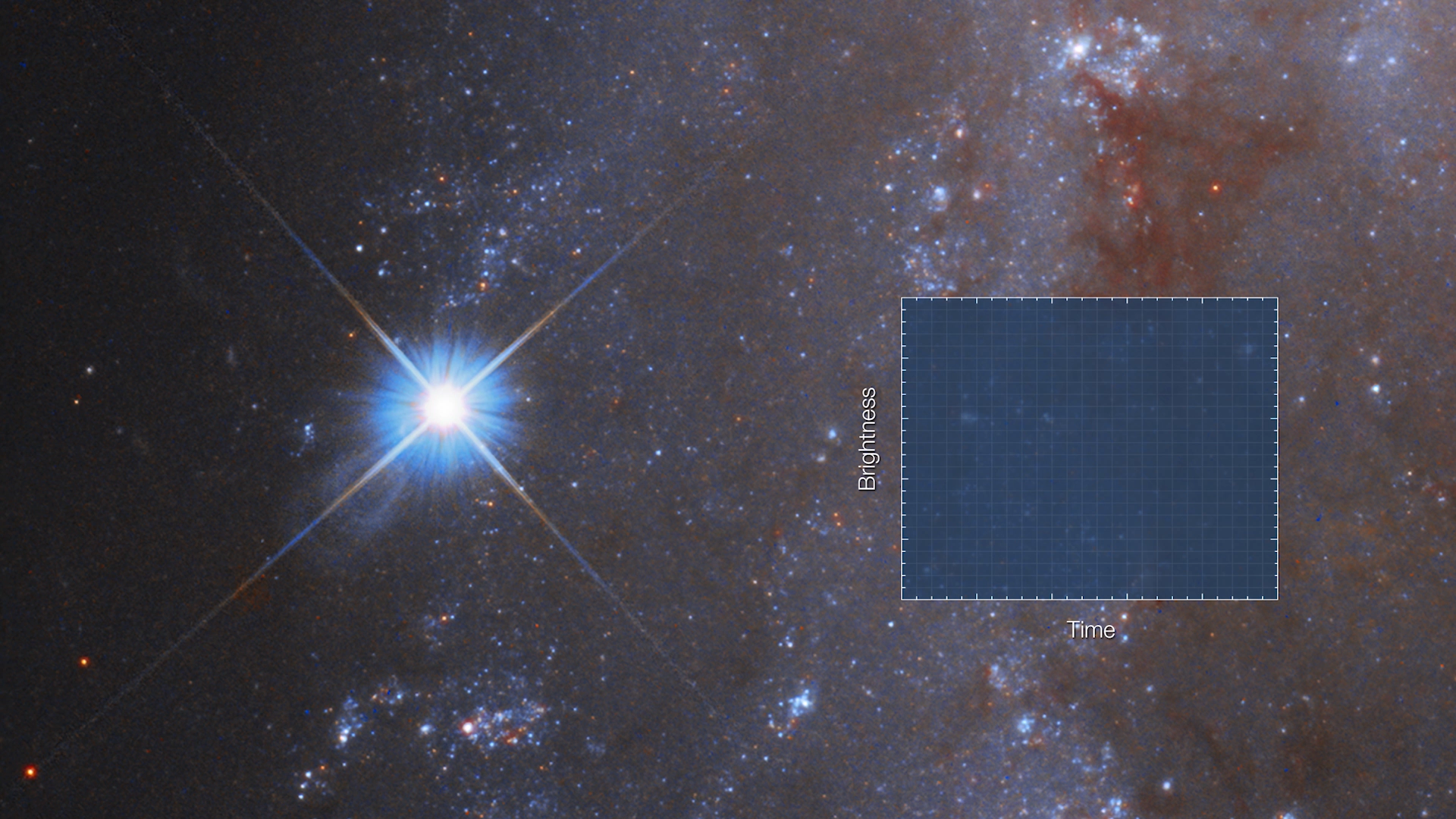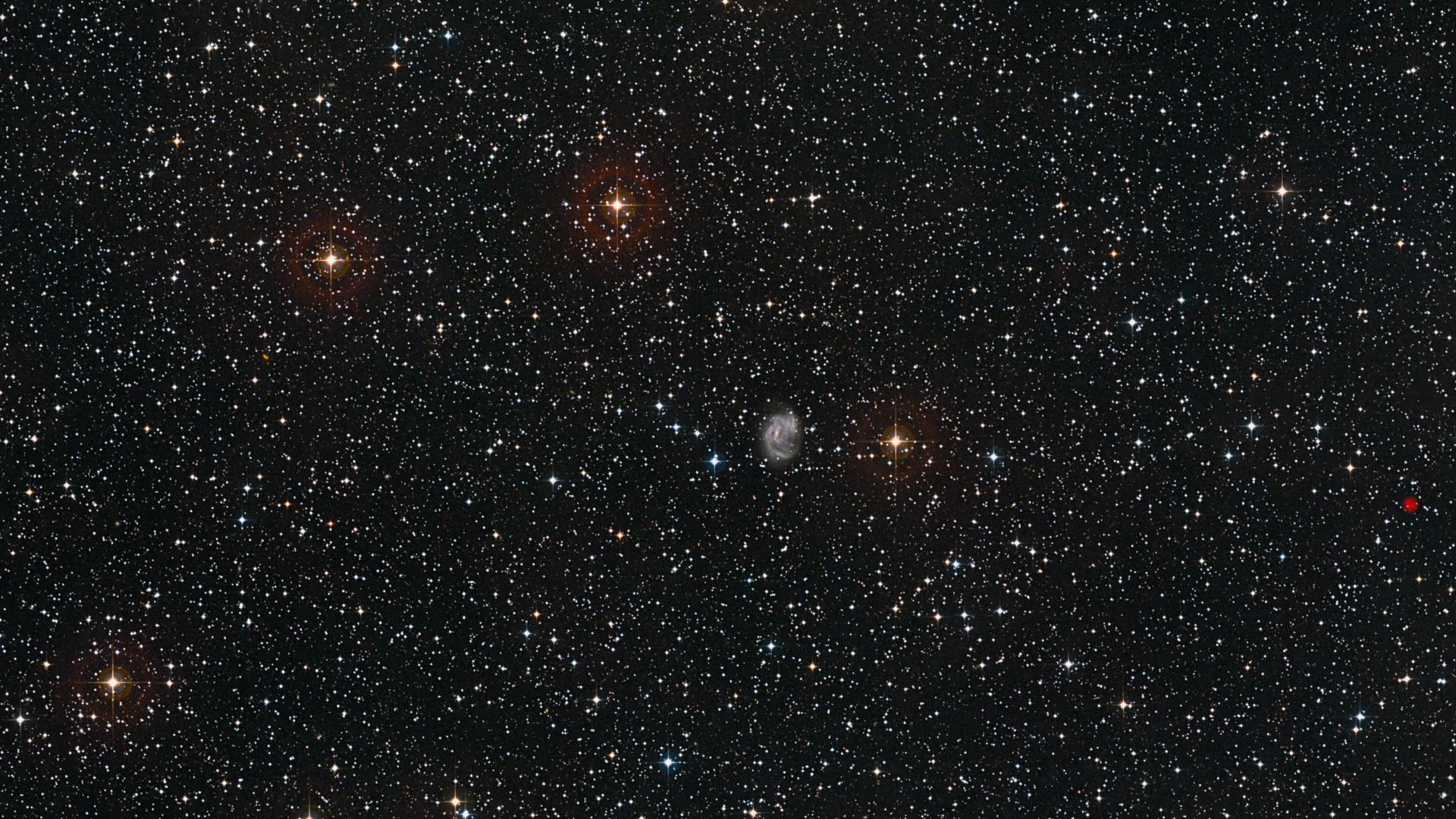1 min read
Compass Image for NGC 2525

About the Object
- R.A. PositionR.A. PositionRight ascension – analogous to longitude – is one component of an object's position.08:05:35.15
- Dec. PositionDec. PositionDeclination – analogous to latitude – is one component of an object's position.-11:25:35.74
- ConstellationConstellationOne of 88 recognized regions of the celestial sphere in which the object appears.Puppis
- DistanceDistanceThe physical distance from Earth to the astronomical object. Distances within our solar system are usually measured in Astronomical Units (AU). Distances between stars are usually measured in light-years. Interstellar distances can also be measured in parsecs.71 million light-years
- DimensionsDimensionsThe physical size of the object or the apparent angle it subtends on the sky.Image is 2.42 arcmin across (about 50,000 light-years)
About the Data
- Data DescriptionData DescriptionProposal: A description of the observations, their scientific justification, and the links to the data available in the science archive.
Science Team: The astronomers who planned the observations and analyzed the data. "PI" refers to the Principal Investigator.The HST observations include those from program 15145 (A. Riess) - InstrumentInstrumentThe science instrument used to produce the data.WFC3/UVIS; WFC3/IR
- Exposure DatesExposure DatesThe date(s) that the telescope made its observations and the total exposure time.Feb 2018 to Feb 2019
- FiltersFiltersThe camera filters that were used in the science observations.F350LP, F555W, F814W, F160W
- Object NameObject NameA name or catalog number that astronomers use to identify an astronomical object.NGC 2525
- Object DescriptionObject DescriptionThe type of astronomical object.Spiral Galaxy
- Release DateOctober 1, 2020
- Science ReleaseHubble Watches Exploding Star Fade into Oblivion
- Credit

These images are a composite of separate exposures acquired by the WFC3 UVIS and IR instruments on the Hubble Space Telescope. Several filters were used to sample narrow wavelength ranges. The color results from assigning different hues (colors) to each monochromatic (grayscale) image associated with an individual filter. In this case, the assigned colors are: Cyan: F555W Orange: F814W Red: F160W Luminance: F350LP
Related Images & Videos

Supernova in NGC 2525
Astronomers using NASA's Hubble Space Telescope captured the quick, fading celebrity status of a supernova, the self-detonation of a star. The Hubble snapshots have been assembled into a telling movie of the titanic stellar blast disappearing into oblivion in the spiral galaxy...

Time-Lapse of Fading Supernova in NGC 2525
This video shows a unique time-lapse of supernova 2018gv in galaxy NGC 2525, compressing a nearly one-year duration into a few seconds. The supernova is captured by Hubble in exquisite detail within this galaxy in the lower left portion of the frame. It appears as a very bright...

Time-Lapse of Fading Supernova in NGC 2525 (annotated)
This video shows a unique time-lapse of supernova 2018gv in galaxy NGC 2525, compressing a nearly one-year duration into a few seconds. The supernova is captured by Hubble in exquisite detail within this galaxy in the lower left portion of the frame. It appears as a very bright...

Zoom to Fading Supernova in NGC 2525
This video zooms into the barred spiral galaxy NGC 2525, located 70 million light-years away in the southern constellation Puppis. Roughly half the diameter of our Milky Way, it was discovered by British astronomer William Herschel in 1791 as a "spiral nebula." The sharpness of...
Share
Details
Claire Andreoli
NASA’s Goddard Space Flight Center
Greenbelt, Maryland
claire.andreoli@nasa.gov





























